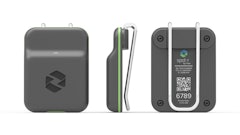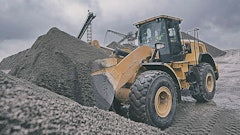
Construction management is the foundation for every successful building project. The role of the construction manager is to coordinate, plan, and complete every phase of the project. In order to do that, there are many moving parts to each step of the project, which must be successfully finished before moving to the next phase. Therein lies the pitfall to construction management -- if one of the tasks should fail, it can lead to a domino effect that may put a project into the red, or force it to finish off schedule.
Gone are the days of wallets stuffed with paper receipts and handwritten purchase orders in triplicate. Lack of automation on construction sites leads to tremendous waste in both material and productivity. For one of the largest industries worldwide, inefficiency is becoming a thing of the past due to workflow tools and site automation. From permitting to punch lists, some of the best automation tools a construction manager can possess are detailed in this guide.
Gantt Charts
Gantt charts offer a visual, cascading schedule of tasks. They can help construction managers assess how long a project will take and the resources necessary to complete it. Gantt charts also allow you to see which staff is assigned to a task, task dependencies, and project milestones. This can aid in simplifying complex projects that need project plan illustration.
In order to create a Gantt chart, the relevant information must be gathered and put into either the construction site software, or the specific program one is using to build and track the chart. The information that is required for the chart is the project scope, project tasks, task dependencies, effort per task (time requirement), resources (employees), and finally project milestones.
The greatest benefit to Gantt chart tracking is the ability to combat project scope creep using Gantt charts. The visual nature of the Gantt chart ensures that the project timeline, resources, and cost are easily followed, and deviations are quickly spotted so they can be addressed before the project is pushed out of scope.
The ability to create custom views is a feature that is utilized for projects with a large staff working on them. Most Gantt chart software features the ability to upload data from Microsoft Excel, allowing much of the accounting files related to the project, such as bids, to be easily transferred from Excel to the project tracking software.
Many of the construction site management programs offer a Gantt chart tool. In addition, they offer an option that provides the project planner with detailed material status and material availability dates, vital in managing project planning. Gantt charts are the right choice for ensuring that one phase of a project is completed prior to starting work on the next task. If you need tighter control over project task dependencies, the Gantt chart is a simple solution you can implement today.
Smart Contracts/Blockchain Technology
A smart contract is a computer protocol intended to digitally facilitate, verify, or enforce the negotiation or performance of a contract. Smart contracts link the transactions in the contract, allowing digital approvals and signatures. This means you can immediately create and approve change orders, bill the client when a project milestone is approved, and share and approve plans, punch lists, and change orders.
The use of smart contracts in waiver tracking is a concept set to take the construction industry into the digitized world. The blockchain technology could ensure preliminary notice delivery and acceptance, work with payment software to ensure lien deadlines are met, and track certified progress of the project against the scope of work. Permitting, liens, digital plans, and plan approval smart contracts are just a few of the construction applications blockchain technology can offer.
Smart contracts are ideal for maximizing transparency in the construction industry. The project would be agreed upon, milestones set, and through traceable and secure action updates in the contract, approved for payment to be issued. They would also reduce noncompliant project spending that would require invoicing outside of the contract because change order approval can be handled through the blockchain technology.
Automated Material Management
Automated material management can be as simple or as intricate as a construction manager wants it to be. From cranes and towlines that use the IoT (Internet of Things) to offload and store supplies, to reading the weights of bags of concrete and uploading the data into a supply database, automated material management is vital to suppliers and contractors alike.
In automated material management, from the moment materials arrive on the site until the project is completed, the material is tracked and traceable. Managing materials is a key to providing accurate estimates, and untimely shortages lead to disgruntled clients and unforeseen construction expenses. Preventative machinery maintenance falls under automated material management for construction sites, and construction site management software can offer real-time insight on machinery and material by construction site.
Site Employee Management
Communicating effectively, delegating responsibilities, prioritizing deadlines and evaluating progress are all part of a construction manager's toolbox. Construction site software meshes a construction site with the office. From staffing the site to daily field reports, scheduling and site safety can be handled in real time with construction site software.
Payroll approval, updating project budgets, accident reporting, and equipment checklists are some of the benefits that construction site software offers. Overall, construction site software lends a remote view of the project at any time by managing scheduling, safety, budgeting, and real time task allocation.
Many construction site management programs offer mobile options, and are popular because they feature the ability to send employee schedules via text, and approve payroll through a daily report feature. There are many construction site management programs that offer form automation tools for safety inspections, accident reports, pre-shift inspections, and many other frequently used documents in the construction industry, making physical copies obsolete. An employee simply accesses the form on his phone, fills in the relevant data, and hits “save”.
Construction Management Can Benefit From Automation
Projects fail because of supply chain and subcontractor issues. The construction management software options available address these problems and offer innovative solutions that work in real world applications. Material and productivity workflow tools ensure that the project materials are on site and accounted for, and keep your project labor within scope. Design conflicts, defective material or defective install, as well as subcontractor issues can all be addressed immediately to keep the project on track and on budget.
Analyzing costs, planning labor, on site safety, and material handling are a few of the benefits of construction management software. Real time task allocation and virtual progress tracking help a construction manager keep a project within budget and on schedule. That can also help in getting timely payments released, and keep clients and construction managers on the same page throughout the execution of the project.






























